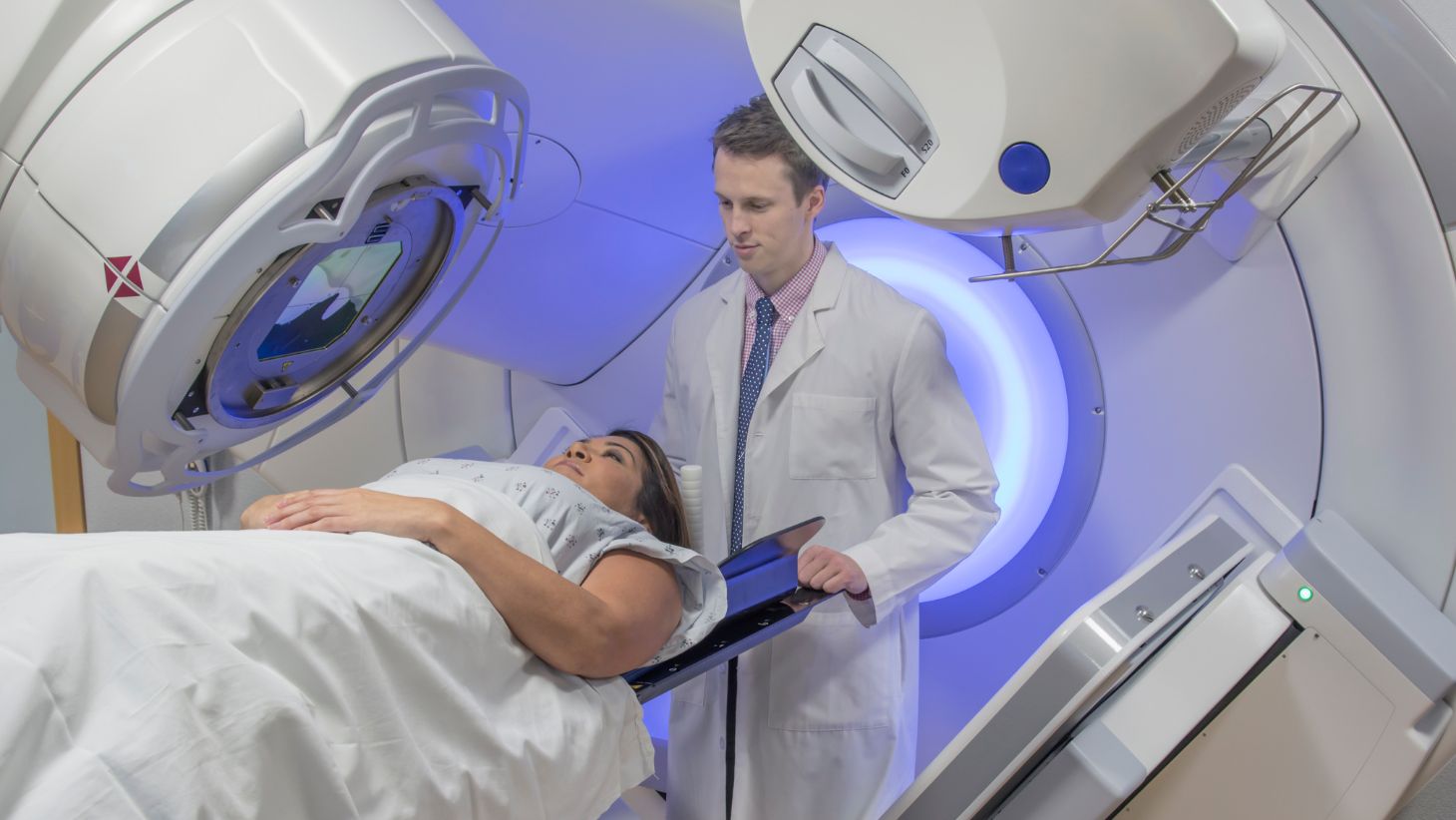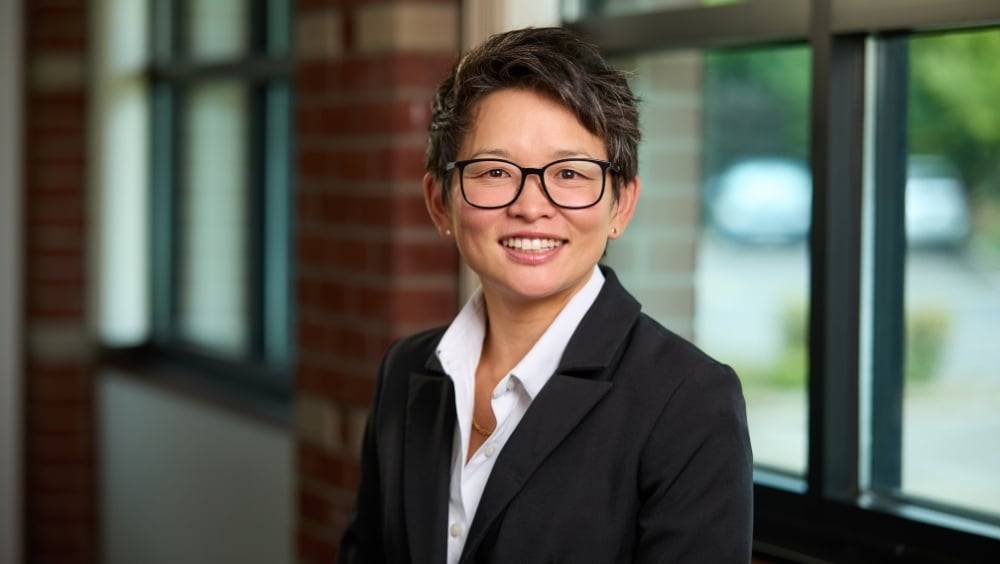Radiation therapy, also known as radiotherapy, is a highly effective and commonly used treatment to target and kill cancer cells and shrink cancerous tumors. Radiation therapy uses high-energy beams or particles to damage cancer cells’ DNA. This prevents the cells from dividing, resulting in cell death. Radiation therapy can be used alone or in combination with other breast cancer treatments, like chemotherapy, surgery, or other therapies. The recommended treatment plan and the timing of those treatments will be based on several factors specific to you.
Types of Radiation Therapy for Breast Cancer
Your specific breast cancer radiation treatment plan will be based on:
- The type of breast cancer, and how likely it is to grow quickly
- The size and location of the breast cancer tumor(s). This is often determined in the staging process.
- Your age and overall health condition
There are two main types of radiation therapy used to treat breast cancer. External beam radiation is the most common type and targets the tumor, through the skin, from outside the body. Internal radiation delivers radiation inside the body.
External Beam Radiation Therapy for Breast Cancer Treatment
External beam radiation therapy uses high-energy X-rays to target your breast cancer. Advanced technology and 3D imaging help pinpoint the exact area of the breast where the cancer is located. The beams of radiation are then planned to conform to the exact shape of the tumor. With this type of radiation therapy technology, called IMRT, we’re able to reduce the amount of healthy tissue that’s affected by these treatments.
It’s typical for breast cancer patients receiving external beam radiation therapy to be given treatment five days a week for several weeks. In some cases, the radiation therapy treatments can be hypofractionated. Instead of one short session every weekday for 6-8 weeks, it’s possible to increase the dose per day to shorten the number of weeks that radiation therapy is needed. Some patients can be done with radiation in 4-5 weeks when hypofractionated therapy is used.
Each time you go to the cancer center for radiation therapy treatments, you’ll lie on a table in the radiation-delivery machine (called a linear accelerator). They’ll take some time to be sure you’re in the same spot in each treatment session. Try to wear clothes that are loose fitting and make it easy for you to lie down.
Internal Radiation Therapy for Breast Cancer Treatment
The most common type of internal radiation therapy used to treat breast cancer is high-dose-rate (HDR) brachytherapy. It’s used to treat early-stage breast cancer after breast cancer surgery. HDR brachytherapy is a much shorter process compared to external radiation therapy but currently has limited use in those who had small tumors found early.
An applicator with tiny tubes is placed into the breast. During each treatment session, seeds are placed in the tubes for several minutes to deliver radiation treatment and destroy any remaining cancer cells not removed during surgery. The seeds may also target nearby lymph nodes – a common area where cancer spreads. The seeds are removed but reinserted at each session. After about a week, when you complete your treatment, the applicator is removed.
When is Radiation Therapy Used for Breast Cancer?
Radiation therapy can be used after a lumpectomy to reduce the size of the tumors, making them easier to remove, but it can also be used to treat advanced breast cancer. Radiation therapy may also be suggested to use in combination with other treatments, such as chemotherapy. Learn about the various ways radiation therapy is used to treat breast cancer below.
Radiation Before Breast Cancer Surgery
Radiation therapy that is used before breast surgery to shrink a tumor is called neoadjuvant therapy. This reduces the risk of cancer cells spreading during surgery, reduces the tissue needed to be removed, and helps with swelling and discomfort.
Radiotherapy After Breast-Conserving Surgery
Radiation therapy used after a lumpectomy, also called breast-conserving surgery, kills stray cancer cells that remain in the tissue surrounding the tumor. A lumpectomy preserves the maximum amount of breast tissue. Patients often receive external beam radiation therapy or HDR brachytherapy following their surgery to help ensure that all cancer cells are dead, which reduces the risk that cancer will return.
Is Radiation Therapy Needed After a Mastectomy?
The entire breast is removed during a mastectomy, so radiation therapy is rarely needed. Your breast cancer doctor may recommend it if you have enough risk factors that make cancer more likely to return. Risks include cancer that has affected several lymph nodes, the presence of BRCA genes, and your cancer’s size and location.
Related Read: Should Surgery Be Done Before Other Breast Cancer Treatments?
Radiation Therapy for Metastatic Breast Cancer
Metastatic breast cancer is cancer that’s spread to other parts of the body. This type of cancer is treated as breast cancer, and radiation therapy may help shrink tumors that are causing pain to areas outside of the breasts, like the liver, lungs, or brain.
What to Expect at Your Radiation Oncology Visit
If radiation therapy is recommended as part of your breast cancer treatment plan, your first appointment with the radiation oncologist will include getting several images to help develop your personalized plan. Images from a computed tomography (CT) scan pinpoint your cancer so the radiation can be delivered precisely. You won’t receive radiation on the first visit. However, you may go through a simulation to find the cancer’s precise location. You will lie on a table, and low-level lasers will be used to establish the location for future treatment sessions.
Your treatment schedule will be established during your first visit. Sessions usually take place five days a week over several weeks. During each visit, you’ll be evaluated for any side effects. Watch this video to learn more about what to expect during radiation treatment.
Managing the Side Effects of Radiation Therapy for Cancer Treatment
Side effects of radiation therapy depend on the type of radiation treatment you receive. Radiation treatments rarely cause pain, but some patients experience both short- and long-term problems. Always let your oncologist know if you have any of these side effects because there are treatment options.
Short-term side effects may include:
- Fatigue
- Discomfort or swelling in the target area
- Changes in skin sensitivity
- Fluid collecting in your breast
Long-term effects are less common but can include heart or lung problems, damage to the breast’s fatty tissues, or multiple spider veins (telangiectasias).
Breast Cancer Radiation Therapy Available Throughout Willamette Valley
The breast cancer specialists at Willamette Valley Cancer Institute will be with you throughout your cancer treatment process. We work with each patient to develop a personalized treatment plan that may include radiation therapy. We also consider your personal preferences as we determine the treatments and their timing. Second opinions on breast cancer treatment plans are also available to help each patient feel confident with their plan for treatment.
Request an appointment online at one of our cancer centers located throughout Willamette Valley and the coast, including Albany, Corvallis, Eugene, Florence, Lincoln City, or Newport, Oregon.




